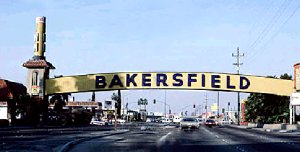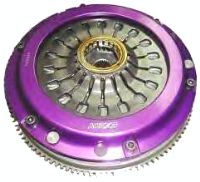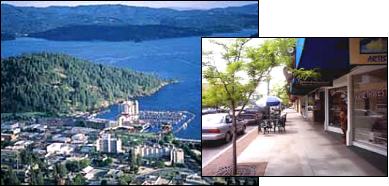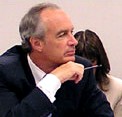|
by JACK LYNE, Site Selection Executive Editor of Interactive Publishing
BAKERSFIELD, Calif. – Dreyer's Grand Ice Cream Holdings is scooping out a big dip of a project that would've sparked sharp envy inside Willi Wonka's fabulous chocolate factory. Dreyer's US$100-million expansion of its plant in Bakersfield, Calif., will create the largest ice cream plant in the United States.
The project will add 250 new jobs and 400,000 sq. ft. (36,000 sq. m.) of new space inside the production facility, built in 1988 by
Nestle Ice Cream. The expansion is an offshoot of Dreyer's $2.8-billion acquisition last year of Nestle's ice cream business. That transaction resulted in the creation of a new holding company, Dreyer's Grand Ice Cream Holdings, which offers the two firms' combined frozen desserts.

"Our Bakersfield operations center is already one of the top manufacturing facilities in the country for frozen snacks," William Oldenburg, Dreyer's executive vice president of operations, said in announcing the expansion.
The Bakersfield plant currently employs 450 workers in 250,000 sq. ft. (22,500 sq. m.) of space. That operation now produces 98 million 12-unit packages of frozen snacks a year, running 24 hours a day, seven days a week.
And the Kern County facility churns out that huge capacity with noticeable speed. Each minute in the day, for example, the plant produces some 1,000 units of Dreyer's Drumsticks and 150 of the company's Carnation-brand ice cream sandwiches.
Make 70 Million Gallons of Ice Cream
That, though, will markedly change. The expansion will add five ice cream production lines, an ice cream warehouse with a 20-door shipping dock, prep kitchens, and space for offices to support the added production. In addition, the project will create new R&D facilities that will include a pilot plant for flavor development.
The expanded 650,000-sq.-ft. (58,500-sq.-m.) plant will have the capacity to manufacture 70 million gallons (372 million liters) of ice cream a year. (At the same time, the facility will continue to turn out its current volume of frozen snacks.)
"This country has grown up on Drumsticks, Nestle Crunch Bars and Carnation Ice Cream Sandwiches," Oldenburg said. "And now, from this facility in the heart of California, we'll also be creating new flavors, and new packaged and single-serve ice cream products to keep America smiling."
The project is certainly keeping area economic development officials smiling. The expansion will have an economic impact of about $55 million locally, Dreyer's officials estimated. That was in line with a study done by the Kern County Economic Development Corporation, which predicted that an expansion of only 100 jobs would've had an $8-million impact on spending for residential real estate alone.
Spurred Another Plant's Shutdown
With the Nestle's buy, Dreyer's acquired not only the Bakersfield plant, but other California production facilities as well in the City of Commerce and Tulare. After the acquisition, the Oakland, Calif.-based company decided that it needed to expand its West Coast ice-cream production. But expanding wasn't an option in Union City, which sits some 33 miles (53 kilometers) southeast of San Francisco. The plant site had no additional acreage that could've accommodated an enlargement.
Oldenburg announced the impending close of the Union City plant, calling it "a very difficult decision," in late October of last year.
"We need to balance our production to better serve our customers throughout the country," he said. "It is economically inefficient to support four plants in California. We need to plan for future demand, and there are physical limitations that inhibit our ability to expand our Union City plant."

Dreyer's didn't have those limitations at the 47-acre (19-hectare) Bakersfield site. City and county officials made their area more appealing by extending the local enterprise zone to take in the Dreyer's plant. That will enable the company to receive state tax credits over the next two years if it hires workers from areas with high unemployment rates or from job-training programs.
The Union City shutdown laid off 168 workers. Dreyer's at the time said that it hoped "to offer alternative positions or work locations to an estimated one-third of those employees." Company officials haven't commented on whether any of the new positions would be filled by former workers at Union City, which is 264 miles (422 kilometers) northeast of Bakersfield.
Dreyer's also plans to expand its manufacturing capacity at a plant that serves the U.S. East Coast, Oldenburg said. Some of the company's products are marketed under different names in different U.S. regions to honor Dreyer's co-founders, Joseph Edy and William Dreyer. Specifically, those products are sold under the Dreyer's brand throughout the western states, while they're marketed under the Edy's brand east of the Rocky Mountains. (Haagen-Dazs and Nestle frozen snacks, on the other hand, are marketed internationally.)
The company has four other U.S. plants. Two of them, in Fort Wayne, Ind., and Laurel, Md., are in the eastern half of the U.S. Dreyer's other two plants are in Houston and in Salt Lake City.
|
by JACK LYNE, Site Selection Executive Editor of Interactive Publishing
MASCOT, Tenn. – For the second time in two years, Exedy America is expanding its Knoxville, Tenn.-metro plant, creating 196 new jobs in a $56-million project. The expansion will add 86,000 sq. ft. (7,740 sq. m.) of space to the 330,000-sq.-ft. (29,700-sq.-m.) facility in Mascot, Tenn., , which makes automotive torque converters.
The U.S. subsidiary of Osaka, Japan-based Exedy Corporation considered building a brand-new plant at several locations, including China, according to the Knox County Industrial Development Board. The Mascot plant's high productivity was a major factor in deciding instead to expand the Tennessee operation, said Exedy America President and CEO Koji Akita.

State and local incentives buttressed the area's appeal as well. The county offered $8 million in property tax breaks. The state is providing another $537,000 in infrastructure improvements and a $158,000 job-training grant, as well as subsidies that are tied to job creation and equipment spending. Exedy America will get a $2,000 credit from the Tennessee Jobs Tax Credit Program for each new plant position, plus a 1-percent excise tax credit on expenditures for new manufacturing equipment.
And there will be a lot of equipment involved in the project. Exedy's expansion will entail installing 350 pieces of new equipment to add two to three new production lines and upgrade the plant's transmission technology, said company officials.
Expand in Tennessee This Year
"Companies come to Tennessee for a lot of reasons," the governor continued at the project announcement, held at Exedy's 138-acre (55-hectare) site in Eastbridge Business Park. "Above all, we have a highly skilled work force with a great work ethic."
Bredesen also praised the East Tennessee area for its recruiting work ethic in landing major expansions. "I think if some other parts of the state can emulate or imitate what's going in some of these successful areas, they, too, can join that."

Other companies that earlier this year announced large local expansions include Aisin Automotive Casting, which is building a 280,000-sq.-ft. (25,200-sq.-m.), 400-employee plant in Clinton, and Otics USA, which is adding 80 new jobs in a $25-million expansion of its engine-parts plant in Morristown.
Exedy America's expansion also marks the third major investment in Tennessee by a Japanese-based company this year, said Matthew Kisber, commissioner of the Department of Economic and Community Development.
It initially built a 237,000-sq.-ft. (21,330-sq.-m.) plant. In 2002, Exedy completed a 96,000-sq.-ft. (8,640-sq.-m.) expansion of the Mascot facility.
The company expects to complete its latest expansion early next year. At that point, the Mascot plant will have the capacity to make 1.43 million torque converters a year.
Torque converters are installed in automatic transmissions to serve the same function as a clutch in a manual-transmission vehicle. They allow the engine to keep turning while the auto's wheels and gears are at a stop. The torque converter regulates output according to the engine's speed, allowing drivers, for example, to keep a car stopped at a light by using only light brake pressure. As the engine speeds up with acceleration, the converter responds by transmitting more torque to the wheels.
Exedy America makes torque converters for Ford, General Motors and Nissan.

Editor of Interactive Publishing
Coeur d'Alene, Idaho – Ending an inordinately broad nationwide search, U.S. Bank has selected Coeur d'Alene, Idaho, as the site of its new 500-employee call center. The subsidiary of Minneapolis-based U.S. Bancorp picked the northern Idaho location after considering 3,000 U.S. locations, Rick Barton, regional president of U.S. Bank in North Idaho/Palouse, explained in announcing the project.

"I want to be the first to welcome these new jobs to our state and say that we are proud that U.S. Bank identified Idaho as the best place in the country to establish their new facility," Gov. Dirk Kempthorne (R) commented.
"This is a great example of how teamwork can make something positive happen for both U.S. Bank and the Coeur d'Alene community," said Barton.
He cited "the combined support and involvement" of a broad cast of players, including Gov. Kempthorne and Coeur d'Alene Mayor Sandi Bloem and the City Council, as well as Roger Madsen, state Commerce and Labor Director, and Steve Griffitts, president of Jobs Plus, Inc., the Kootenai County economic development agency.
"Key factors in our decision to build the call center here," said Barton, "were the pro-business environment in Coeur d'Alene, combined with a skilled and available labor force, access to work-force training and higher education, and U.S. Bank's existing presence in the market."
Growing Retail Payment Sector
The Coeur d'Alene operation will assist customers of U.S. Bank's growing retail payment solutions division, which includes consumer debit and credit accounts, as well as small business accounts. The Idaho facility will be the second call center for retail payment solutions division. The other center is located in Fargo, N.D.
Barton said that construction of the $15-million, 60,000-sq.-ft. (5,400-sq.-m.) facility will begin this summer, with move-in scheduled early next year. The center will be built on a 10-acre (four-hectare) site at the mixed-use Mill River development near the Spokane River. U.S. Bank will staff up the Coeur d'Alene facility over a five-year period, Barton said.
The company is receiving work-force training aid from the state, but Idaho officials didn't estimate the dollar value of the assistance. Madsen commented in announcing the project that "Idaho's Work Force Development Training Fund is set up to ensure that companies and employees are rewarded for expansion and advancement."
U.S. Bancorp is the seventh-largest U.S. financial services holding company, with assets of $192 billion. The company has 2,275 banking offices in 24 states, most in the Midwest.
Also Lured Verizon, Other Firms
Verizon, for example, is opening a 300-employee call center in Coeur d'Alene, where Center Point is also opening a 200-employee center.
For Center Point, the facility marks a rebirth of its area operation. The company, which provides outsourced call center services and technical support, closed its local operations in Coeur d'Alene and Post Falls last year. The shutdown came because one of the company's customers, Comcast Corp., decided to move its outsourced call-centers back in-house. Center Point is returning to the same facility in Coeur d'Alene that it closed late last year.
Other companies that have come to Kootenai County over the past year include All Wall Contracting, which relocated 120 jobs to Post Falls from Spokane, Wash., and Global Digital Solutions, a provider of media training, which relocated its small corporate headquarters to Coeur d'Alene from Laguna Hills, Calif.
In addition, Sysco Food Services is constructing a 140,000-sq.-ft. (12,600-sq.-m.) distribution center in Post Falls that will be focused on restaurants.
| CONTINUE TO THE LATEST EDITION OF “TOP INCENTIVES DEAL” | |
| RETURN TO: SITESELECTION.COM | LOOKING FOR A PREVIOUS STORY? CHECK THE ARCHIVE. |
 PLEASE VISIT OUR SPONSOR • CLICK ABOVE
PLEASE VISIT OUR SPONSOR • CLICK ABOVE 
©2004 Conway Data, Inc. All rights reserved. Data is from many sources and is not warranted to be accurate or current.

